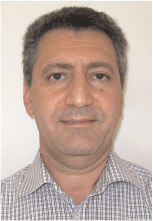1D depth burial history and thermal maturity modelling of the Toolebuc Formation, Queensland
Behnam TalebiGeological Survey of Queensland, Department of Natural Resources and Mines.
The APPEA Journal 56(2) 590-590 https://doi.org/10.1071/AJ15096
Published: 2016
Abstract
The Toolebuc Formation in the Eromanga and Carpentaria basins in western Queensland shares many characteristics with successful tight oil plays in the US. A study by the Geological Survey of Queensland has examined key parameters for this formation, including depth, thickness, lithology, mineralogy, maturity (both vitrinite reflectance and Tmax), total organic carbon and mud gas compositions and identified a possible play fairway in the central Eromanga Basin. Mudgas wetness ratios indicate that in areas modelled to be more mature, oil may be present in the Toolebuc Formation. These areas are typically in the central Eromanga Basin where the Toolebuc Formation is deepest, though oil responses have been calculated for wells that are shallower. This is contradicted by the apparent maturity of the formation based on vitrinite reflectance and Tmax measurements.
Initial burial history modelling of the six petroleum wells indicates that DIO Hammond–1, SSL Clinton–1, DIO Tanbar North–1 and DIO Marengo–1 are in main oil window (0.7–1.0 %Ro) while DIO Denley–1 and DIO Ingella–1 are in the early oil window (0.55–0.7 %Ro). A single erosional event of 550 m of the Winton Formation has been assumed for this modelling. These wells are the deepest intersections of the Toolebuc Formation where it has been modelled to have higher maturity, and mudgas wetness ratios indicate oil may be present.
Further refinement of these models and examination of additional wells is needed to better understand the potential for the Toolebuc Formation to have generated petroleum.

Behnam Talebi is a geologist who graduated from Tehran University in 1991. He completed his postgraduate studies in geothermal energy technology at the University of Auckland in 1996. Behnam has more than 22 years’ experience at senior and management levels and has been running a number of geothermal energy projects in Australia and Iran from reconnaissance studies through to field exploration and development programs. He has more than 25 publications in the form of technical reports, papers and bulletin articles. Behnam is working for the Geological Survey of Queensland as Project Manager for the Denison Trough project. The project aims to undertake a regional assessment of the Denison Trough for identifying new hydrocarbon generation potential and constructing a 3D geological model for the trough. |
References
Al-Hajeri, M., Al Saeed, M., Derks, J., Fuchs, T., Hantschel, T., Kauerauf, A., Neumaier, M., Schenk, O., Swientek, O., Tessen, N., Welte, D., Wygrala, B.P., Kornpihl, D., and Peters, K.E. (2009). Basin and petroleum system modeling. Oilfield Review 21, 14–29.Fang, H., and Jianyu, C. (1992). The cause and mechanism of vitrinite reflectance anomalies. Journal of Petroleum Geology 15, 419–34.
Frielingsdorf, J., Aminul Islam, Sk, Block, M., Mizanur Rahman, Md., and Golam Rabbani, Md. (2008). Tectonic subsidence modeling and Gondwana source rock hydrocarbon potential, Northwest Bangladesh Modelling of Kuchma, Singra and Hazipur wells. Marine and Petroleum Geology 25, 553–64.
Hantschel, T. and Kauerauf, A., 2009—Fundamentals of basin and petroleum modelling (1st edition). Heidelberg, Germany: Springer Verlag.
Jarvie, D.M., Claxton, B.L., Henk, F.B., and Breyer, J.T. (2001). Oil and shale gas from the Barnett Shale, Fort Worth Basin, Texas [abs.]. American Association of Petroleum Geologists Bulletin 85, A100.
Magoon, L.B., and Dow, W.G. (1994). The petroleum system – from source to trap. American Association of Petroleum Geologists (AAPG), Memoir 60, 3–24.
Mahlstedt, N., Hübner, A. and Horsfield, B., 2015—Future resources project DNRM1490: petroleum generation and phase kinetics characteristics of samples from various basins in Queensland. Michendorf, Germany: GEOS4.
Mavromatidis, A., and Hillis, R. (2005). Quantification of exhumation in the Eromanga Basin and its implications for hydrocarbon exploration. Petroleum Geoscience 11, 79–92.
Peters, K.E., 2009—Getting Started in Basin and Petroleum System Modeling. American Association of Petroleum Geologists (AAPG) CD-ROM #16, AAPG Datapages.
Sweeney, J.J., and Burnham, A.K. (1990). Evaluation of a simple model of vitrinite reflectance based on chemical kinetics. American Association of Petroleum Engineers Bulletin 74, 1,559–70.
Troup, A., Edwards, S., Talebi, B. and Preda, M., 2015—Regional assessment of the Toolebuc Formation: a shale oil play in south-west Queensland. Eastern Australian Basins Symposium: publication of proceedings, 7–25.
Welte, D.H., Horsfield, B. and Baker, D.R. (Eds), 1997—Petroleum and basin evolution. Berlin: Springer.
Wygrala, B.P., 1989—Integrated study of an oil field in the southern Po Basin, Northern Italy. PhD thesis. Cologne: University of Cologne.


